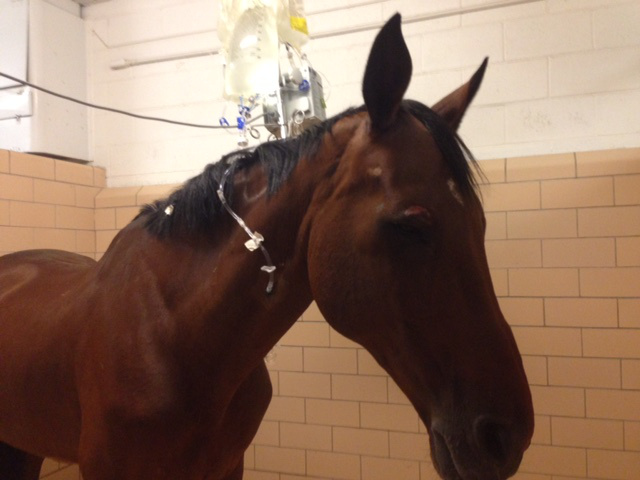
Colic Surgery: Where Do We Go from Here?
Kate Kosnoff shares some advice on how to rehab your equine friend.
When I landed in the Newark Liberty International Airport after a two week long trip to Europe in August of 2013, I did not expect to turn my phone on to dozens of text messages and missed phone calls. What happened next involved a lot of crying and sniffling (and being yelled at while going through customs). I learned that my beloved Marley had been rushed to the Purdue University Large Animal Hospital that day and was currently in the middle of a colic surgery. Definitely not what any horse owner wants to hear.
The next 17 days included a second colic surgery, an infected incision, and a massive blood clot in my poor boy’s neck. The next several months included a lot of stress and many conflicting veterinary opinions, with some doctors saying he would never do anything more than trot under saddle.
Here are a few important things I learned during Marley’s rehabilitation process that I feel are worth sharing. These apply to any major injury or surgery, not just colic.
1. Be patient with your horse. Under no circumstances should you ever disregard your vet’s advice by pushing your injured equine to do something he or she isn’t ready for yet.
2. Understand that the recuperation process is hard on your horse, and react accordingly. If the injury requires a prolonged period of stall rest, make sure to hand walk and hand graze your pony often. Imagine being stuck in a box for any amount of time–you would go crazy too! Investing in good toys or treats can also be beneficial; Jolly Balls and salt licks provide endless hours of entertainment and can help your horse beat the boredom blues.
3. When it’s finally time for them to go back into work (YAY!), don’t get frustrated when your initial rides aren’t perfect or your horse misbehaves. Instead, reward him or her for their patience and bravery. The more relaxed you are, the more relaxed they’ll be, making everything so much easier.
4. Make sure to monitor the injured area often, even after it has healed. In Marley’s case, he has a large herniated area on his belly as a result of infection, and I check it every day to make sure it hasn’t changed in diameter. Always, always, always err on the side of caution! No horse owner has ever regretted being too careful.
Today, Marley is healthy and happy, and is back competing at the 3′ level on the A circuit. Bringing him back from pasture pet to show horse has been such a gratifying experience, despite its ups and downs.
Kate Kosnoff is a sophomore at Denison University in Ohio. She has been riding for seven years and currently owns two horses, Mac and Marley. You can check out her blog, Kate at the In Gate, here.








Leave a Comment